Poplars in Kashmir and the people in Pulwama have been acknowledged as key contributors to reducing India’s dependence on imports in managing the pencil deficit. But the enormous contribution that Jammu and Kashmir’s manufacturing and agricultural sectors make in enabling better schooling across the country is under-assessed and least-acknowledged, reports Masood Hussain
Today, Prime Minister, Narendra Modi, said in his Mann Ki Baat in October 2020, that Pulwama is playing an important role in educating the entire nation. “If the students across the nation do their homework, prepare notes, it is because of the hard work of the people of Pulwama,” Modi famously said. “Almost 90 per cent of the demand for pencil slate in the country is met by the Kashmir Valley. And Pulwama has a big share in that. At one time, we used to import the wood for pencils, but now, Pulwama is making the country self-reliant in this field.”
In a quick follow-up to the Pulwama’s importance to the school education in India – and most of the world, the then Chief Secretary, B V R Subrahmanyam started the basic spade work making pencil part of this south Kashmir district’s identity. Now the Commerce Secretary in Delhi, that basic work led to the declaration of Pulwama as a ‘pencil district’.
“It was an empowering development,” one pencil-maker said. Ookhu, the village, which is the epicentre of pencil making in Kashmir, was celebrated in news and politics. “But nothing much happened.”
“I am under intense pressure from the company that I must increase my raw material supplies four times,” Manzoor Ahmad Allie, the man who understood the Kashmir potential in having substantial stakes in pencil, the basic to school learning, said. He runs the Jhelum Agro Industries, the first unit, established in 2003, that actually gave birth to a chain of units in the area. “My problem is that I am unable to manage it because I require power supplies on a 24 x 7 basis.”
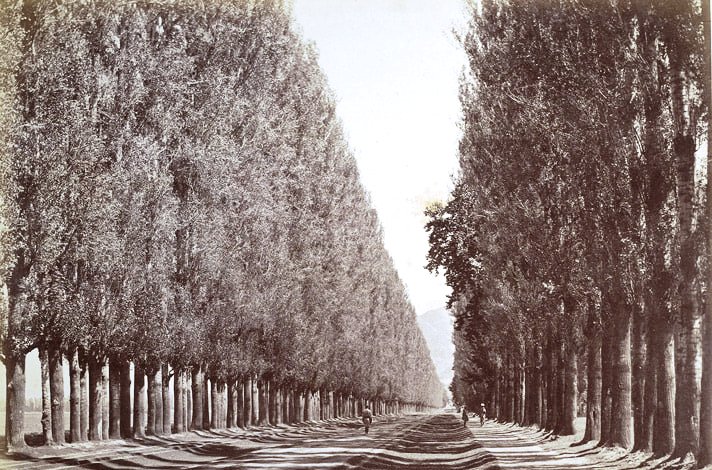
Contributions Not Assessed
People associated with the supply of ready-to-use raw material for the pencil-making chains insist that while Prime Minister’s public statement endorsed the Pulwama power in enabling proper schooling in India, the territory’s overall contributions have not been assessed. Unless it does not happen, one entrepreneur said, the problem they are facing on the ground shall remain untouched and unaddressed.
Jammu and Kashmir’s manufacturing sector is immensely contributing to the creation of an enabling school environment by manufacturing items, fundamental to better and modern education. This is beyond pencils. Kashmir and Jammu regions are equally contributing to this.
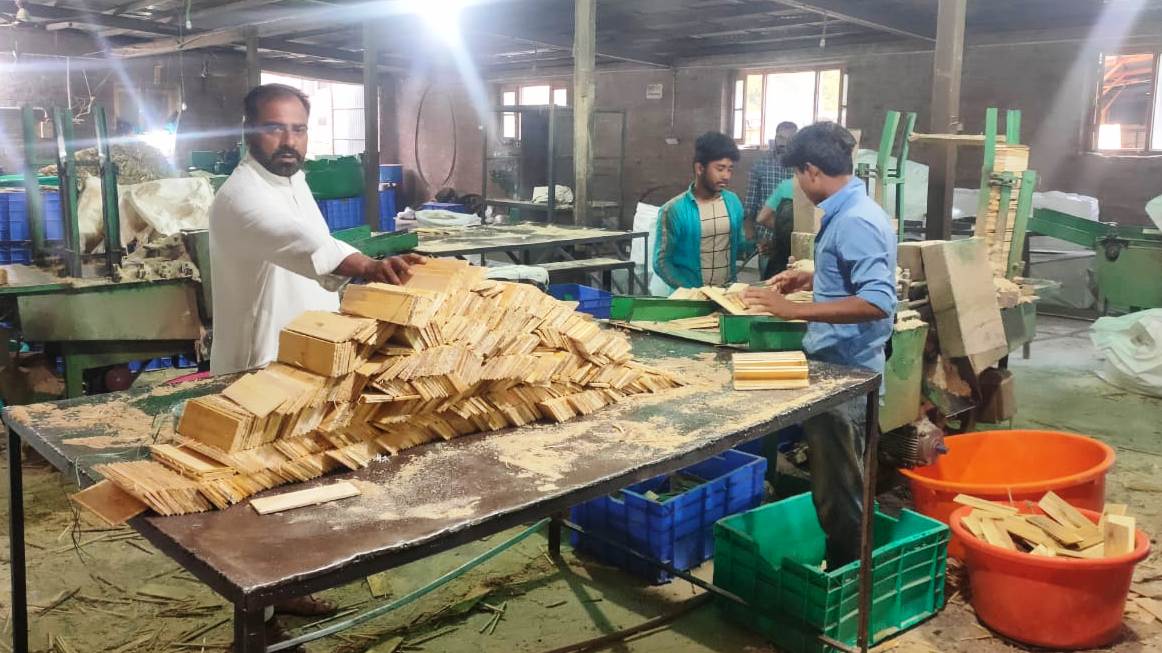
The Camlin Entry
The key opening for this sector started slightly ahead of the last major industrial package that the Vajpayee government announced. Stationary maker, Camlin (established 1931), now known as Kokuyo Camlin Ltd took a piece of land in Samba’s industrial estate and started its colours unit in a huge multi-story building with more than 200 workers, mostly women. With an initial investment of Rs 12.30 crore, the unit was up and running in September 2008.
Its production would go to the company’s wear-housing in Delhi wherefrom it would be marketed. The unit was substantially contributing to the company turnover.
Besides, the company took over the sick industrial unit in Gangyal industrial estate where it put in pencil slate making and wood seasoning unit. It started pencil making in November 2003. Put together, the two units would manufacture almost half of the 2100 products that Camlin markets. However, the Gangyal unit has ceased to work later for reasons not known.
Kangaro In Jammu
Not far away from the Camlin facility is a manufacturing facility of Kangaro Industries, a Punjab-based company, which is a major player in paper staples and home stationery. Almost 125 people are managing this facility.
Operating since 2011, it manufactures around 125 tons of stapler pins a month even though Jammu and Kashmir does not consume even one per cent of it. The unit actually makes staplers, staples, staple removers, paper punches, lever arch mechanisms, scissors, carbon papers, and pneumatic tools for the entire country. Most of the product base of the Ludhiana based company falls under school equipment, office supplies, and home and social stationery. The company markets its products under Kangaro, Kanin and Munix brands.
Old Pencils
However, pencils were being manufactured before the Kangaro and Camlin made their entry into Jammu and Kashmir. The Hindustan Pencils (established 1958), the main pencil maker of India, has been in Jammu since 1980. They started with one unit and gradually grew in numbers. Their operations started with a unit at Akhnoor Road which was later shifted to Bari Brahmana industrial area.
“We have four units operating in Jammu and they have more than 4000 people on its rolls,” Mayur Mehta, the Purchase Manager at Hindustan Pencils said. These include its oldest unit, the Sanghvi Woods, Apsara Plastics, and two units of Hindustan Pencils. “We have many units in Kashmir – in Ookhu and Lassipora – which work with us and we are keen to add more.”
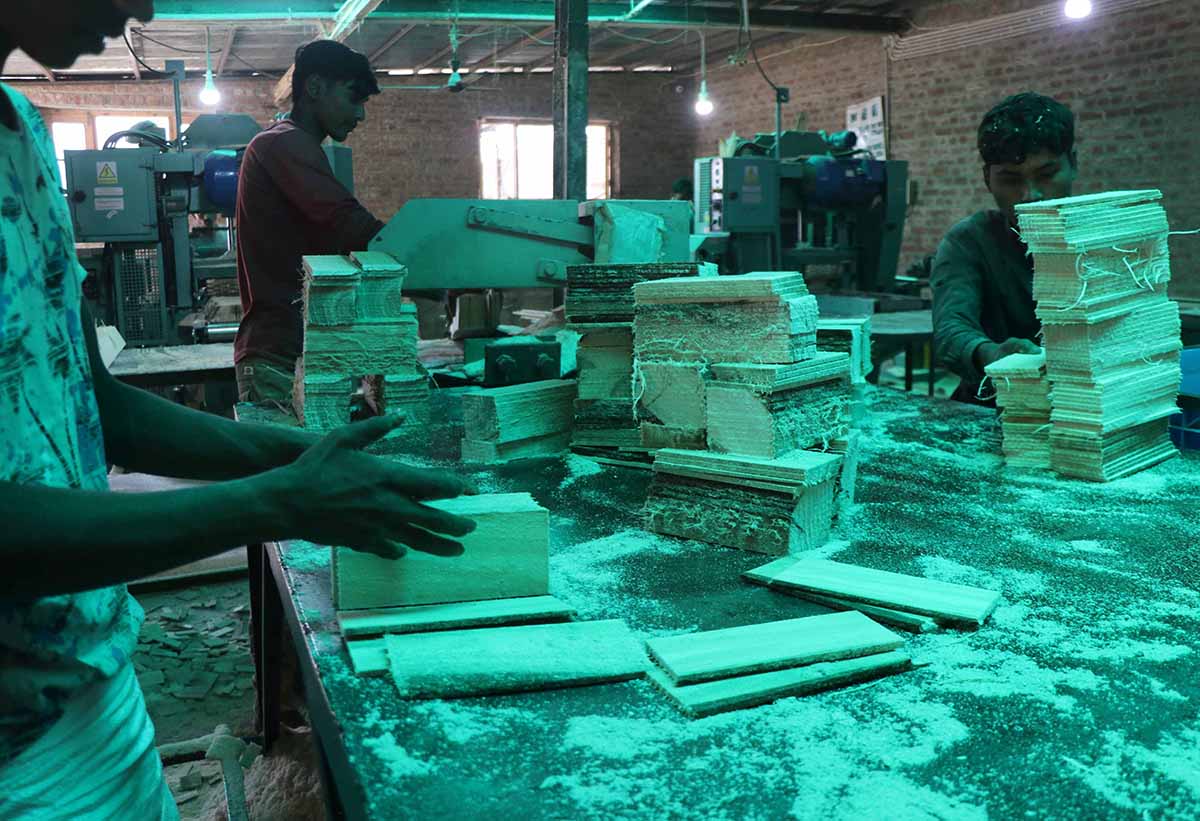
Hindustan Pencil manufactures the two most popular pencil brands, the Natraj and Apsara. Its entire Jammu manufacturing is dependent on the slates that are made in Ookhu and Lassipora.
Mayur said their company (pre-Covid19 turnover Rs 750 crore) sources almost 60 to 70 per cent of the raw material comes from Kashmir and the rest is accessed from coastal Kerala. “It is a huge labour-intensive sector and it requires a lot of human resources to keep the supply lines running. It is not an ordinary area of activity; it is about the education of our future so there are no compromises.” The company gets more than 1.50 crore pencils to market from its facilities in Jammu and Kashmir alone, every day for 24 days a month.
Of late, another pencil maker, DOMS (established 1975) has entered Jammu and Kashmir. It has a unit in Jammu but most of its finished products come from Haryana, to which semi-finished raw material goes from Pulwama and Jammu.
“There are four units that work with DOMS,” Nazir Ahmad, one of the suppliers to the company said. “Cumulatively, we might have around 150 employees in the four units of which three are in Lassipora. One unit that was working with the company in Sangam has closed but the one operating from Dogripora is functional.”
DOMS is offering stiff competition to the established players in the stationary sector. But its footprints in Jammu and Kashmir are much less than Hindustan Pencils, for instance. Insiders in the sector, however, insist they have a strategy in place to pace up in the coming days.
Major Sector
The income that the pencil-making raw material suppliers generate is not small. Being labour intensive, the sector requires a lot of people. Though the skilled lot is sourced from plains, more than half of the workers are locals and most of them are women. “It is modest but the cumulative turnover could improve,” Allie said. “It could actually increase four-fold if we get an improved power supply.”
When the almost-ready finished raw material reaches the manufacturing facilities in Jammu, the final products are made. A huge labour-intensive exercise, it also has impressive turnover. In 2021-22, the total turnover that pencil makers in Jammu recorded was upward of Rs 350 crore of which the Hindustan Pencils alone has more than 90 per cent share.
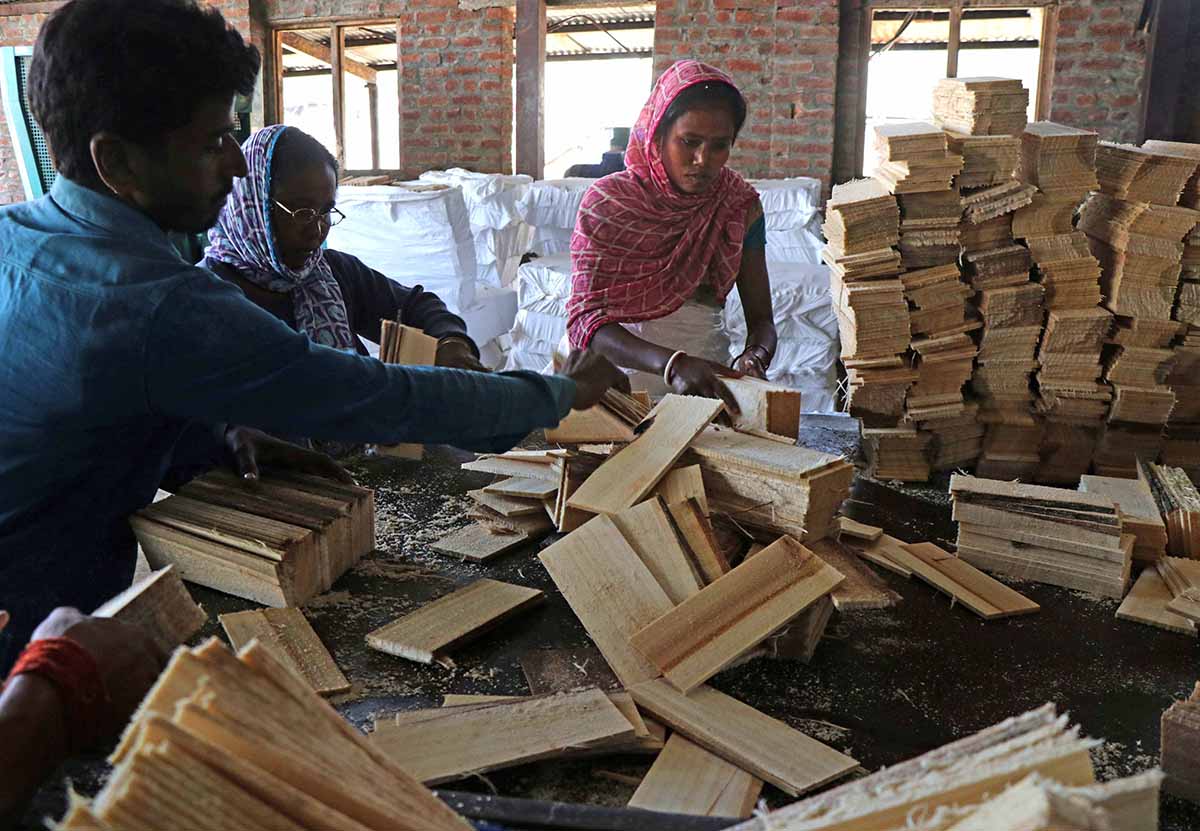
The raw material suppliers in Kashmir literally take the cost of the wood and the expenditures on its processing. Trade insiders said they had registered a cumulative turnover of around Rs 15 crore in 2017-18, which gradually rose to Rs 45 crore in 2019-20. Later, however, it fell to half but is now recovering. “We might have crossed a turnover of Rs 40 crore in 2021-22,” one insider said.
With the schools finally coming out of Covid19 and operating normally across the country, the pencil makers expect improved turnover. While the raw material supplies are about to cross a Rs 10 crore turnover in the first months of 2022-23, the pencil makers in Jammu are about to touch a Rs 100 crore turnover in Q1 of the current fiscal.
Challenges
The competition among the players may not have a huge impact at a time when their raw material base is under stress. The rise of Ookhu as Kashmir’s pencil village is not because of its enterprising people but because its identity is linked to its location. Pencil makers need soft, moisture-rich wood that is durable, too.
“We live in a sort of flood basin so the poplars we grow around meet the fundamental requirements of the student pencils,” Allie said. “It needs to be soft because a lot of children are used to biting it while writing or thinking in the classroom.” The other raw material base for the student pencils is the coastal area of Kerala, for the same reason because its wood also carries enough moisture.
Survived Axing
Poplar has remained a key cash crop and a huge raw material for veneer (plywood), apple boxes, roof topping and pencils. Kashmir produces two varieties of poplars – the traditional one that is endemic to the region and the Romanian variety that is locally known as Russian poplars (Populus deltoids). Unlike the endemic species, the imported variety grows faster as it has the least gestation period. Pencil makers prefer this variety as its raw material. Even though most of the plains grow poplars, it is the one grown in Kashmir’s wet soils that is the most preferred for pencil making.

“Now the government is experimenting with a hybrid variety that has also least gestation period and its saplings were distributed among farmers a few years back,” Allie said. “Let us see how it grows and how it eventually helps the sector.”
The stakeholders had to put in a huge fight to help the poplar survive the axe of myopic policy-making. In 2014, a Srinagar resident approached the court against the pollen infection and the court asked the administration to ban the sale, purchase and cultivation of the imported variety of poplars under section 133CrPC. In 2015, in response to a series of half-baked news reports suggesting poplars are the alleged source of pollen infection, short-sighted officers ordered mass axing of the poplars in Srinagar to a level that poplar timber rates hit the bottom as supplies peaked. In 2016, when the court sought compliances from districts, two districts of Kulgam and Pulwama reported in their compliance note to the High Court that they chopped 600 thousand poplars. In 2018, the High of Jammu and Kashmir ordered the mass axing of poplars after declaring them a health hazard.
Poplars are central to the rural economy and an outcry forced scientists to investigate the issue only to find out that the poplar pollens are least infectious in comparison to the invisible pollens of various grasses, and tree species that the government was pushed to rethink by the court of law.
In 2017, the Chest Disease Department of the Government Medical College, Srinagar, suggested the levels of allergy varied among people – 92.7 per cent were found allergic to dust, 60 per cent to Chinar, 73.5 per cent to common grasses, 62.7 per cent to Pine. This was in tune with a chest medicine consultant Dr Naveed Nazir Shah’s finding that poplar stands at number six as a cause of allergy while dust remains at the top, followed by lawn grass, deodar, kikaar and Chinar. A year later, the SKUAST-K probe found that unfertilized seeds of poplars were non-allergy-causing in nature.
Economics apart, the poplar plantations are ecologically vital as these trees – like willows – are good carbon sequestration facilitators, and phytoremediation agents, which naturally clean up the soil, air, and water from chemicals, stream bank stabilizers, bio filtrates and soil erosion controllers.
During all these years, however, the ill-informed district administrators would continue ordering mass hacking of these trees. A similar situation cropped up in 2020 when the officials linked the spread of Covid19 to the mass infection spread by the pollens. At a high-level meeting, a top officer ordered mass axing. Estimates suggest Kashmir has almost 16 million poplar trees standing at any point of time. The counter-narrative on a scientific basis helped the courts to undo the mass felling orders, issued earlier.
“We are told that the new variety being introduced lacks the cotton-like pollens that dominated the atmosphere but let us see it,” Allie added.
Short In Supply
Poplar timber is more than Rs 1000 crore economy of Kashmir. Traditionally, it was hugely in demand for making tens of millions of boxes for apple, exported to the markets in plains, the introduction of the card-board boxes spared this material to a large extent. However, the successive mass feelings since 2015 have added huge stress to the requirement of poplar timber, a situation that would only be balanced almost after five years.
This, however, has put the pencil makers in direct competition with the plywood makers that required poplars for the veneer. “It is an uneven competition,” Mayur said. “We are producing something basic to the future generation and we cannot afford to make it costly because it kills the purpose.”
Nazir said the timber is getting so costly that it is getting out of hand for the pencil makers. “Till last year, we would purchase it at Rs 270 per square ft and now it is not available at Rs 330,” he said. “Unlike us, the poplar growers welcome the veneer manufacturers because they can afford raw material at any cost.” He said that if the rates continued surging the way they are, most of the units in Kashmir fear closure.
Trade insiders said they had their manufacturing facilities closed for two years because the Covid19-triggered lockdown and school closures had pushed pencil demand to an all-time low. Now when things are getting normal, they are facing raw material and energy issues.
Energy Crisis
The second challenge, Allie said, is that they lack dependable energy supplies to keep the supply commitments. “We have better power supply in Lassipora but the crisis is that if we drive our raw material to the industrial estate, we have to invest more than compromises our margins,” Allie said. “Most of the units operate within the village and locals own, run and man these facilities so the government must intervene and provide us a special feeder so that we put up more machines and hire more people.”
Power supply apart, Mayur’s worry is fading raw material. “I think the priority has to be to make enough raw material available because the demand within and abroad is increasing,” Mayur said. “I would hope the policymakers see it as a key requirement because it is about schooling – not business alone.”
There are other issues as well. Nazir said they had been suggesting the government to manage a buyer-seller meeting so that the possibility of exporting the pencil slates could be explored. “There are at least two major world manufacturers interested in purchasing slates but our request has not been taken in the right perspective,” Nazir regretted. “Do not we have the right to a better market?”
Official Position
“It is a niche sector and it is a priority,” Mehmood Ahmad, Director Industries, Kashmir said. “We have 17 units at Lassipora and Ookhu but most of them are in the unorganised sector.”
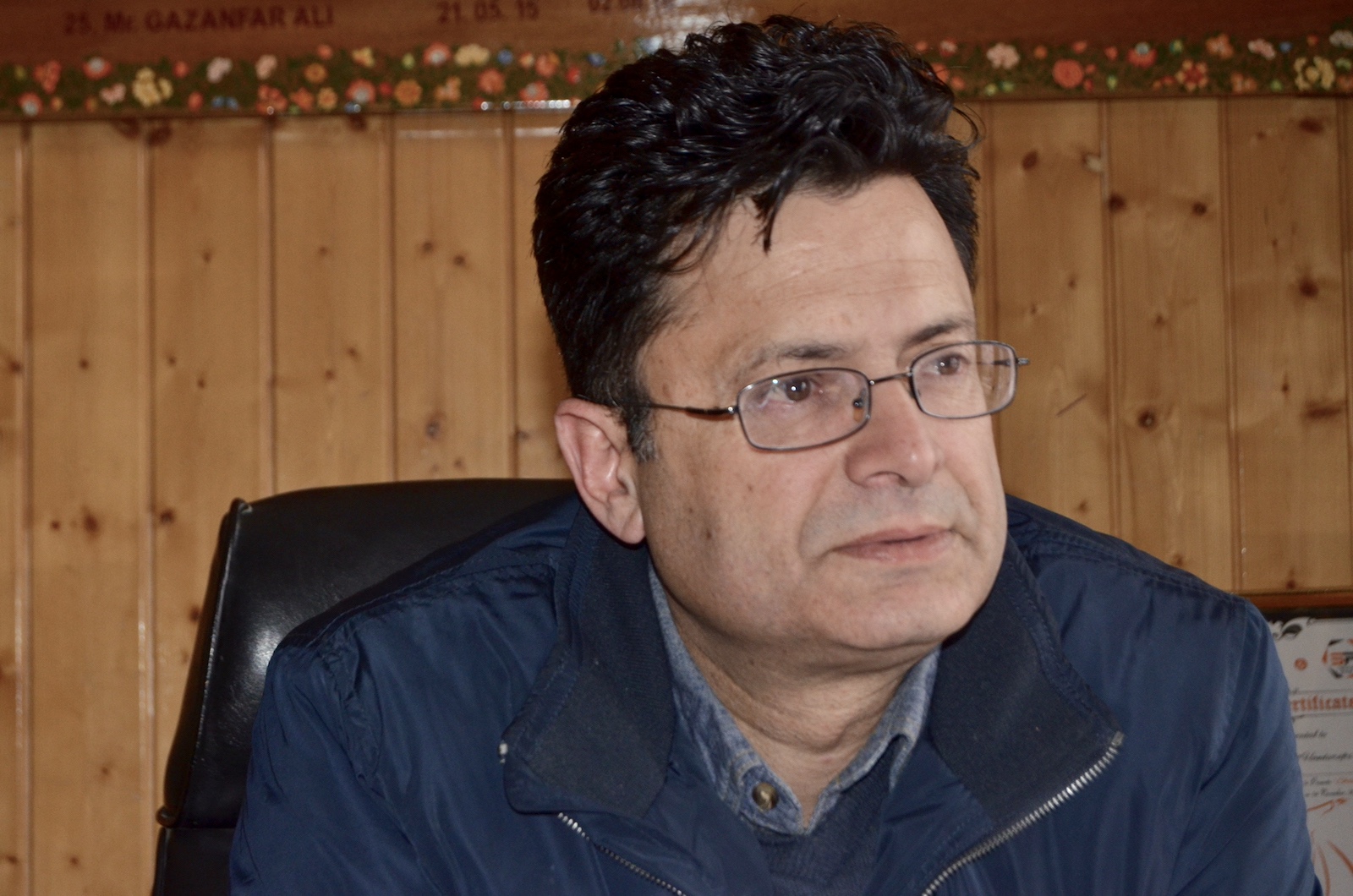
Ahmad said managing a special feeder to the village may not be possible but all these facilities are available in the Lassipora industrial estate. “We have written to the Deputy Commissioner, Pulwama requesting him to identify a space where a special cluster of pencil-making units can be created. The day, we get this piece of land; we will work overtime to set up this sub-sector, somewhere around the area where the stakeholders want.”
Stakeholders Say
One Ookhu resident said that the government took away 180 kanals of land from them which they were cultivating for around 70 years. “I do not know what they want to do to this land but cannot it be possible that this vast stretch of land is dedicated to the poplar plantation and let the government do it,” the resident, who wants to stay anonymous, said. “This will create an uninterrupted raw material supply to these units and the government will continue earning money on a long-term basis.”
A unit holder said creating a new industrial estate for the pencil makers may not be viable because “we are not in a position to dismantle our existing infrastructure and recreate afresh”. He said the government must declare the village an industrial area and give “us the bare minimum support” so that we can take the production line to a new level. Allie said if the government improves only the power supply, he will triple the workers on his rolls within two months.















